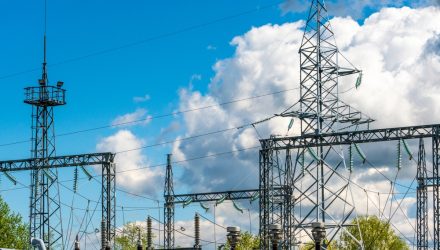Income-minded investors should consider the benefits of the energy infrastructure sector and effective exchange traded fund strategies to access this market segment.
In the recent webcast, Complement Your Dividend Strategies with Energy Infrastructure, Stacey Morris, Director of Research, Alerian and S-Network Global Indexes, argues that midstream energy companies are well-positioned for this type of inflationary environment. Midstream companies have contracts that often include inflation adjustments built in and many liquid pipelines base rates on the Federal Energy Regulatory Commission’s Index. Midstreams have historically outperformed the broader market during previous high inflation years as well.
Looking ahead, Morris highlights the segment’s robust free cash flow generation for 2022, which can continue to support dividends and interest to investors. Some investors may also prefer to use midstream companies’ attractive FCF or FCF per share over earnings as a measure of profitability since these metrics remove non-cash items from the income statement. This excess cash flow is also expected to support increased buybacks to return value to shareholders as well, Morris adds.
Midstream yields are currently one of the most attractive among income-generating investments. For example, the Alerian MLP ETF (AMLP) underlying index, AMZI, shows a current yield of 7.47%, and the Alerian Energy Infrastructure ETF (ENFR) underlying index, AMEI, has a 5.64% current yield. In comparison, the REITs category shows a 3.13% current yield, utilities come with a 3.00% yield and the S&P 500 has a 1.56% yield.
Paul Baiocchi, Chief ETF Strategist, SS&C ALPS Advisors, notes that in the latest quarter, despite the broad market volatility, midstreams have been raising or maintaining their dividend payments. Specifically, 42.6% of AMZI’s constituents have grown dividends and 57.4% maintained their dividends as of Q1 2022, and 28.1% of AMEI’s constituents raised dividends and 65.3% maintained dividends.
While there have been concerns over the increased rhetoric and sentiment concerning climate change and the industry’s response to increased calls for cutting emissions, midstream companies have also committed to doing their part. About 30% of the AMEI Index’s constituents by weighting have a net-zero emission target. Midstream companies are focusing on areas like carbon capture and storage, hydrogen, and renewable natural gas.
To help investors better gauge what type of midstream ETF strategy is the best fit, Baiocchi explained that AMLP provides energy infrastructure master limited partnership exposure. AMLP offers generally high tax-deferred distributions, is exposed to entity-level taxation, provides an income investor objective, is best used in a preferred taxable account type, and is reported on a 1099 tax form.
ENFR, on the other hand, provides access to a broader energy infrastructure MLPs and corporations segment. The ETF offers generally moderate tax-deferred distributions, is not exposed to entity-level taxation, provides a total return investor objective, is best used in a tax-deferred account type, and is reported on a 1099 tax form.
Financial advisors who are interested in learning more about the energy infrastructure sector can watch the webcast here on demand.

